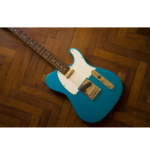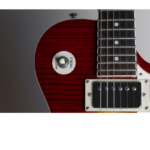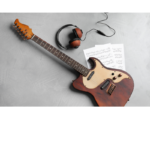Blues music and blues guitar scales hold a special place in my heart and many guitar players. Listening to Stevie Ray Vaughan, B.B. King, and Buddy Guy was a weekend tradition that I started when I was only 11 years old. Once the Blues captures your ears and fretboard there is no turning back. Fusing our music with blue notes and scales facilitates an addiction that most guitar players never quite learn how to stop. The blues is in all of us. Sometimes all we need is a little inspiration to tease it out. Let’s go over some tips and tricks that will help your music sound more like the Blues.
Understanding Blues Guitar Scales and Chords
Blues chord progressions are at the heart of every Blues song. From Howlin’ Wolf to Albert Collins, every Blues song has a distinct chord progression using major, minor or dominant chords. These chord progressions also use extensions such as 7th, 11ths and 13ths to spice up the tune. Almost a majority of Blues songs use the 1,4 and 5 chords in a key to establish a chordal structure. For example:
C D E F G A B
1 2 3 4 5 6 7
We can play a C, F and G to produce a simple Blues chord progression. Try lines up the notes of any major scale and finding the one, four and five chords. This is the heart of the Blues. We can alter these chords to major, minor or dominate 7.
One of the other key elements of blues music theory is the concept of “blue notes.” These notes, often referred to as “flatted” or “bent” notes, add a unique flavor to the song. Mastering the art of incorporating blue notes into your playing is essential for capturing the authentic blues sound.

❌ Stop Guessing. Start Shredding.
If you’re still fumbling through scale patterns and box shapes… it’s costing you progress.
FretDeck™ is the no-fluff system that shows you exactly how to master the fretboard—fast. Early access.
⚡️ This isn’t for dabblers. It’s for players who want results.
👉 Click here to join the pre-launch now
Early access. Limited rewards. Don’t wait.
The Pentatonic Scale: A History
a five-note scale lies at the soul of blues guitar. This scale has been essential to countless blues songwriters. The history of the pentatonic scale can be traced back to the early Blues players like Robert Johnson.
In the context of blues guitar, two forms of the pentatonic scale are commonly used: the major pentatonic scale and the minor pentatonic scale. These scales serve as the foundation for many blues solos. Here are a few blues solos that incorporate the pentatonic scale:
- Eric Clapton, Have You Ever Loved A Woman
- Buddy Guy, Damn Right, I’ve Got The Blues
- B.B. King, The Thrill Is Gone
- Walter Trout, Me, My Guitar & The Blues
- Robben Ford, Midnight Comes To Soon
- Robert Johnson, Come On In My Kitchen
Each of these modern and classic blues guitarist incorporate the minor and major pentatonic scale in each of these songs. Robben Ford typically plays many different scale types over his songs. If you want a more sophisticated blues solo check out all of his albums, they are fantastic. These artists will entertain your ears with a history of Blues guitar scales.
Unlocking The Secrets of the Pentatonic Scale
For beginning guitar players, mastering the pentatonic scale is an essential step in their journey towards becoming proficient blues musicians. Here are some tips to help you unlock the secrets of the pentatonic scale:
- Learn the Patterns: The pentatonic scale can be played in various positions across the guitar neck. Take the time to familiarize yourself with the different patterns and positions, allowing you to effortlessly navigate the scale during improvisation.
- Experiment with Bending and Vibrato: Blues guitar is renowned for its expressive techniques, such as bending and vibrato. Practice bending notes within the pentatonic scale to add depth and emotion to your playing. Experiment with different vibrato techniques to infuse your melodies with character.
- Embrace Call-and-Response Phrasing: A hallmark of blues music is its call-and-response phrasing, where melodic ideas are exchanged between different instruments or voices. Experiment with incorporating call-and-response elements into your solos, using the pentatonic scale to create dynamic musical dialogues.
- Study Blues Guitar Legends: Listen to recordings of legendary blues guitarists such as B.B. King, Robert Johnson, and Stevie Ray Vaughan. Pay close attention to how they use the pentatonic scale in their playing, and draw inspiration from their phrasing, tone, and expression.
Conclusion
Learning from the Blues greats will help develop your ear and your phrasing on the guitar. Play with there records and albums. As you start exploring blues guitar scales, play with jam tracks on you tube or with a friend. If you need help learning Blues guitar scales check out our tool called the FretDeck. It helps to have a guide when you start learning all the blues guitar scales in every key.
Guitar Scale Positions – Unlock the Fretboard
👉 https://guitarfreaksblog.com/guitar-scale-positions-unlock-the-fretboard-with-our-kickstarter-system/











